Catalogue of Incunabula in the National Library of Poland
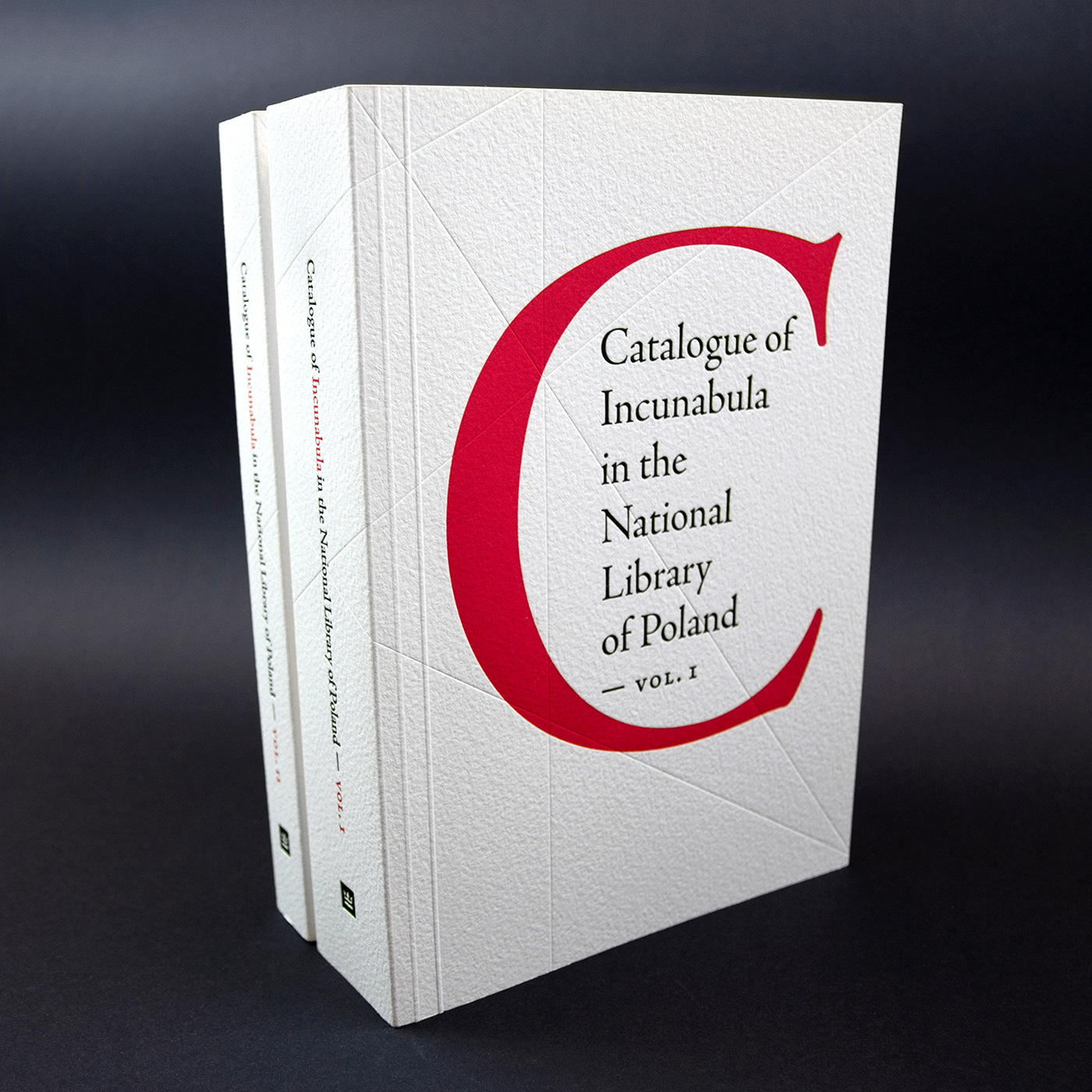
NAGRODY I WYRÓŻNIENIA:
Nagroda w 61. Konkursie „Najpiękniejsze książki roku 2020”, organizowanym przez PTWK, Warszawa 2021
Silver A' Design Award w konkursie A' Design Award and Competition; kat. Print and Published Media Design; 2020–2021; Como, Włochy
Wyróżnienie w konkursie Polish Graphic Design Awards; kat: Wydawnictwa; Raport, książka edukacyjna, wydawnictwo techniczne, słownik; 2021; Warszawa
Wyróżnienie Behance; kategoria: Graphic Design, InDesign; 2021
AWARDS AND DISTINCTIONS:
Award in the 61. Competition by PTWK „Najpiękniejsze książki roku 2020” (The Most Beautiful Books of the 2020), Warsaw, 2021
Silver A' Design Award in the A’ Design Award and Competition 2020–2021 in Print and Published Media Design Category, Como, Italy, 2021
Honorable Mention in the Polish Graphic Design Awards competition in Publications category, Warsaw, Poland, 2021
Behance in the Graphic Design & InDesign category, 2021







projekt / design: Aleksandra Toborowicz
skład / typesetting: Katarzyna Niewczas
klient / client: Biblioteka Narodowa / National Library of Poland
rok wydania / year: 2020
oprawa / binding: miękka, szyto-klejona typu otabind / sewn-glued binding (otabind)
format: 168 x 240 mm
liczba stron / number of pages: 1080 (tom 1 / vol. 1: 704, tom 2 / vol. 2: 392)
kroje pisma / typefaces: Adobe Jenson Pro, Incunables
druk / printed by: Marceli Sp. z o.o., Warszawa
nakład / circulation: 250
okładka / cover: Arches White 400 g/m2; suchy tłok – linie, tekst tytułu – druk typograficzny / dry embossing – lines, title text – typographic printing
zadruk okładka / cover print: 2+1
papier środek / printed on: Munken Premium Cream 1.3, 90 g/m2
zadruk środek / inside print: 2+2 (black + Pantone 199 U)
czerwone nici / red threads
ISBN: 978-83-7009-833-9
zdjęcia / photos by: Aleksandra Toborowicz
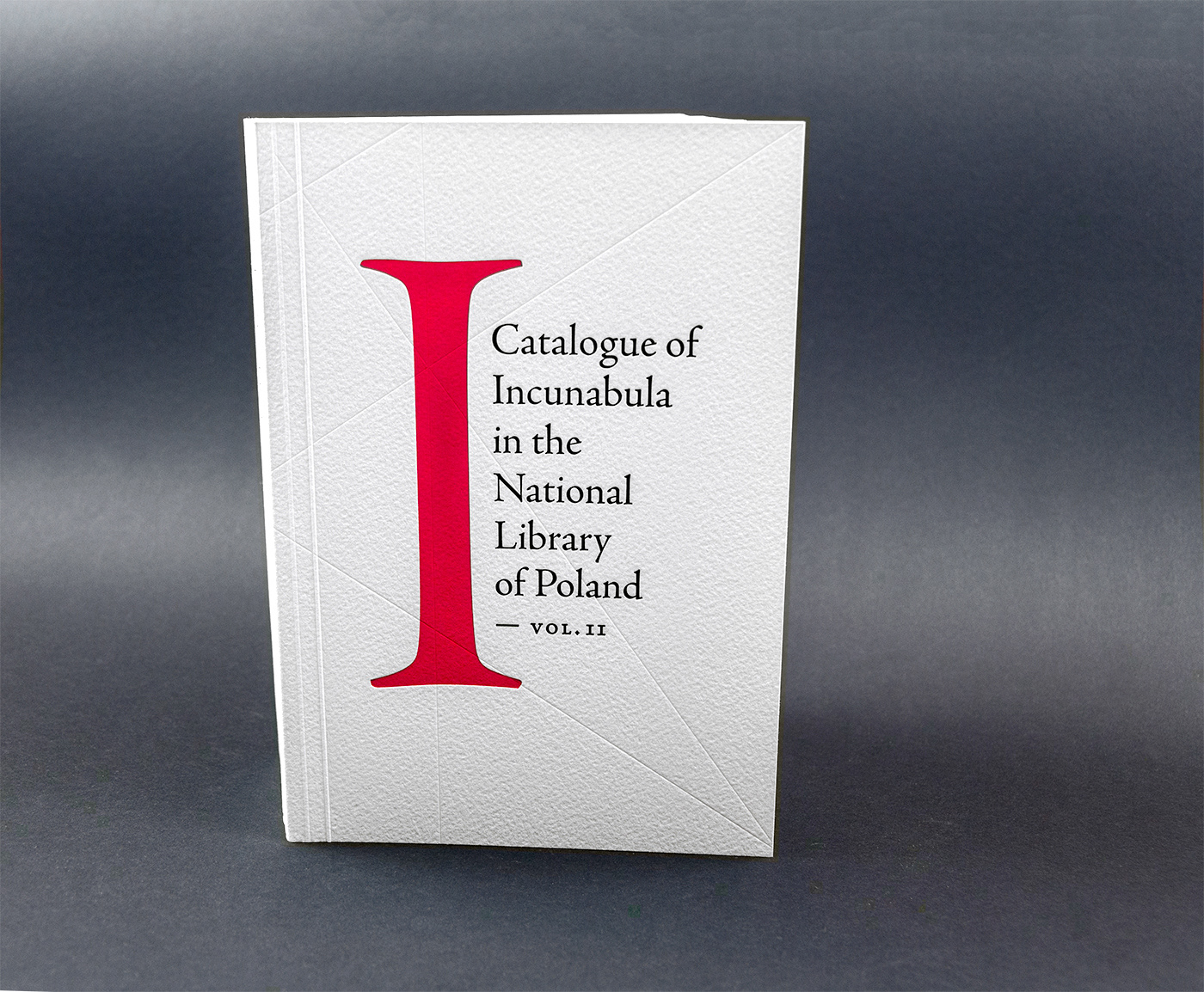
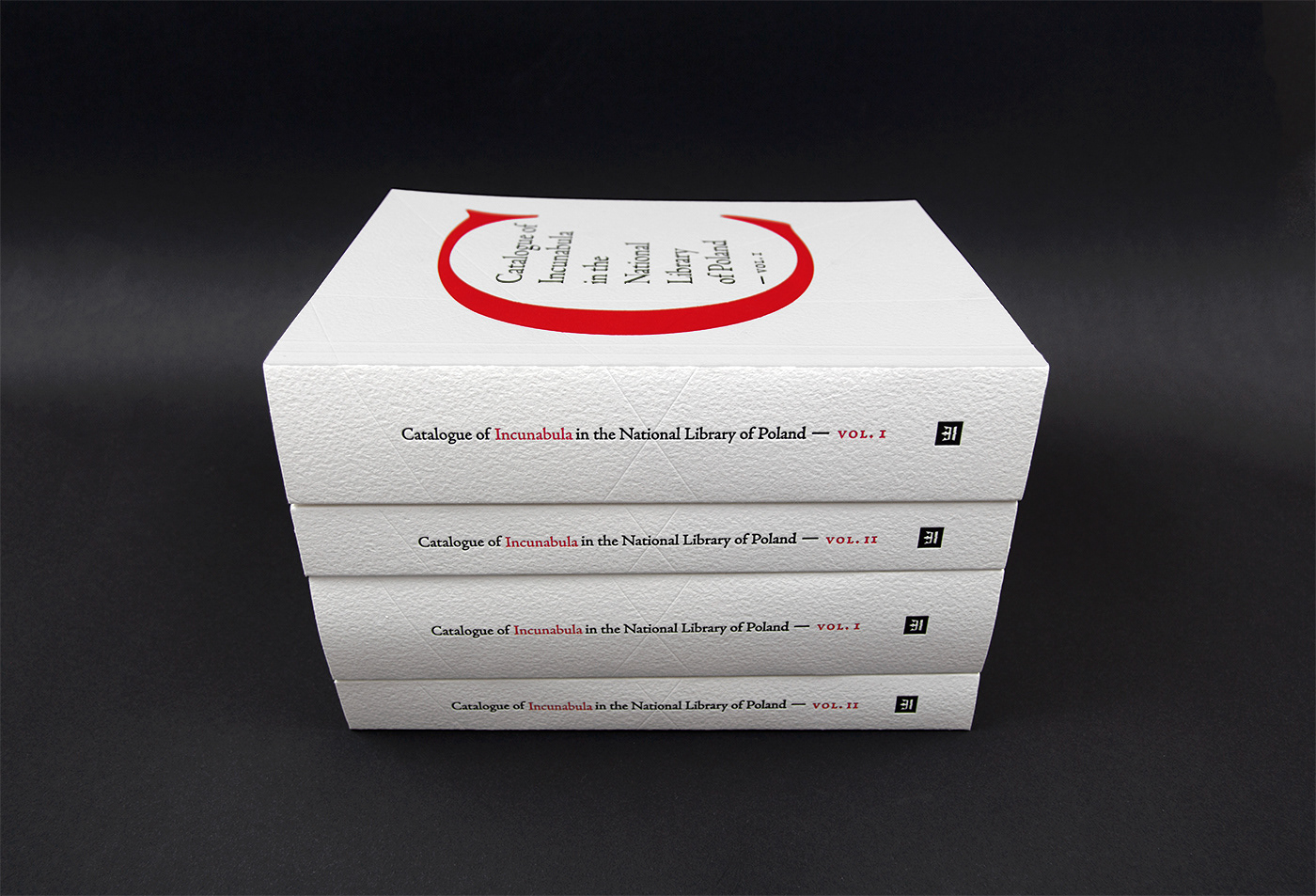
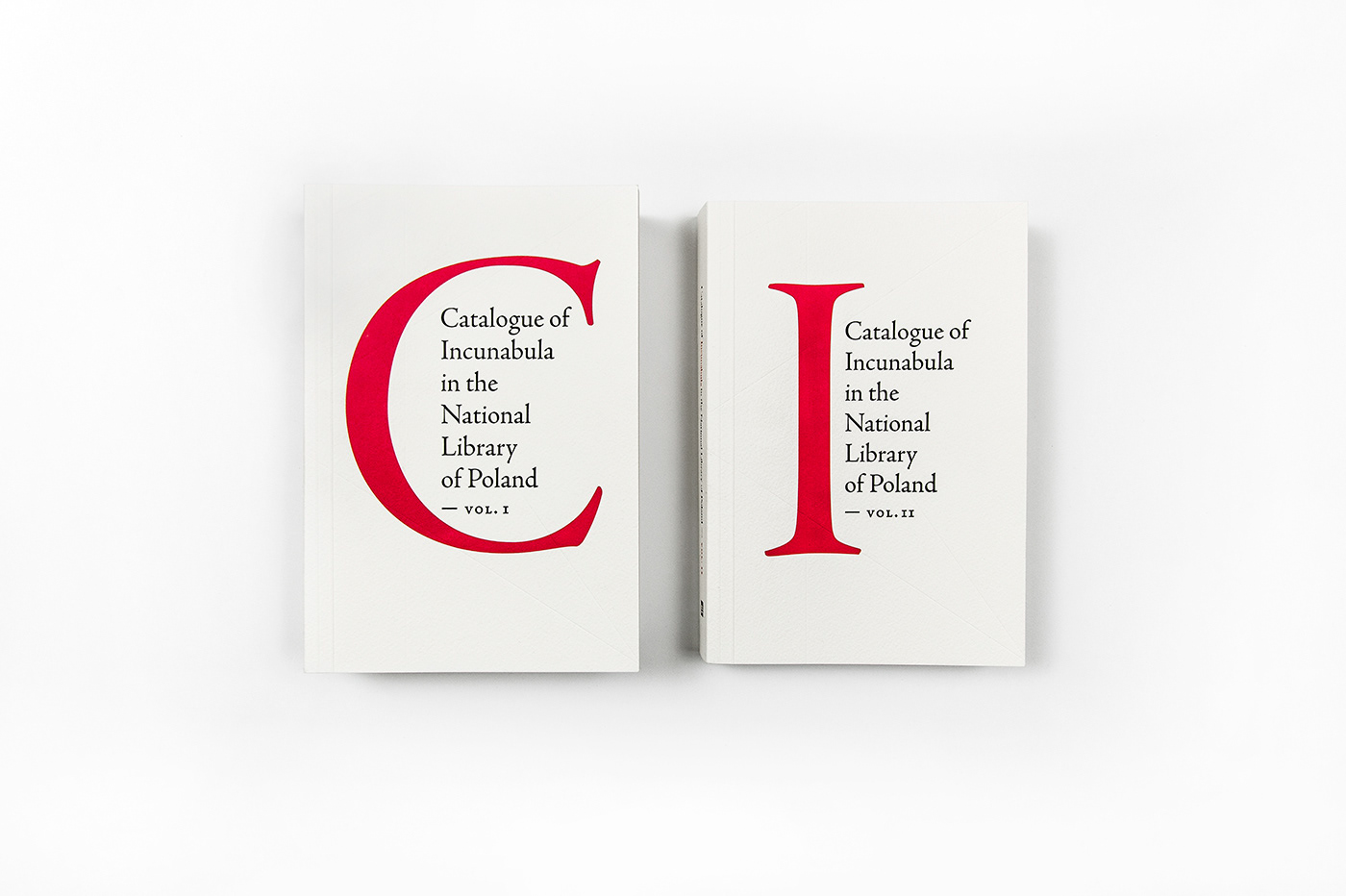

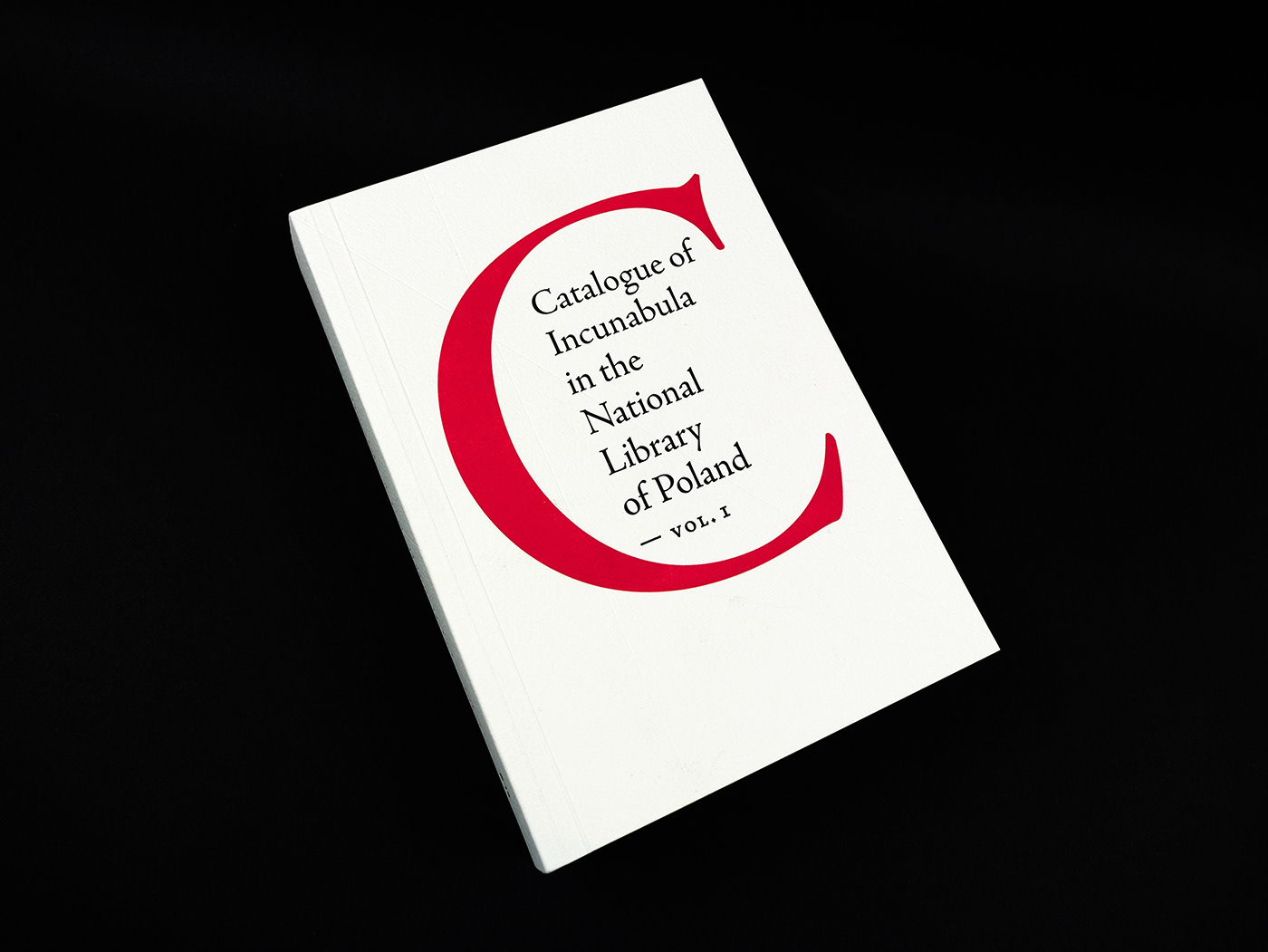


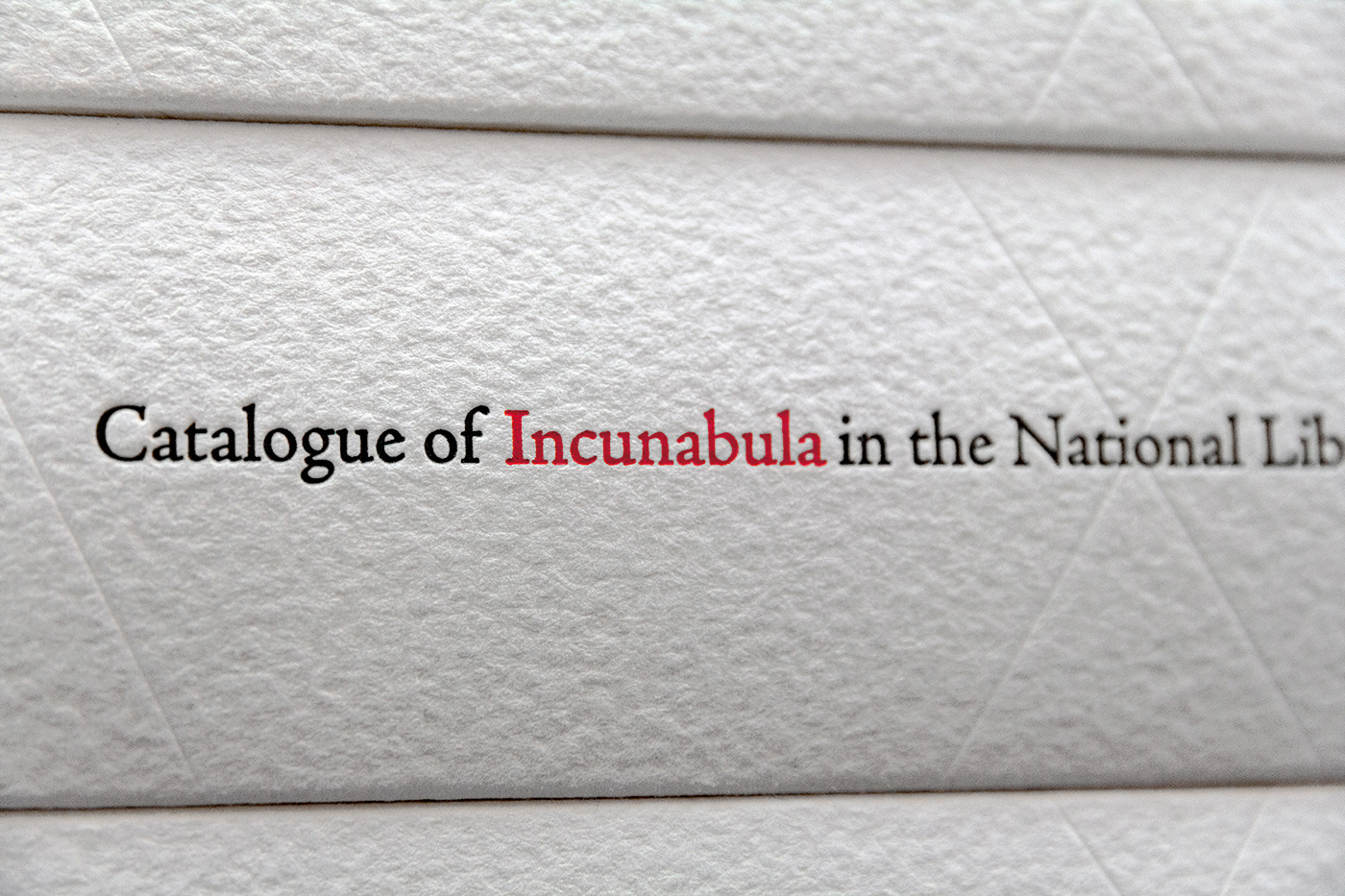

„Dwutomowy katalog przedstawia zbiór inkunabułów, pierwszych druków sprzed 1501 roku, w Bibliotece Narodowej, który obecnie, po 70 latach ich gromadzenia, liczy 1034 edycje (w 1131 egzemplarzach). Katalog został opracowany w języku angielskim, by dać możliwość korzystania z niego badaczom na całym świecie, inkunabuły bowiem stanowią niezwykle cenne dziedzictwo kultury w skali światowej, nie tylko polskiej. Z uwagi na burzliwe i wyjątkowe dzieje zachowanych w BN inkunabułów, hasła proweniencyjne zostały w katalogu bardzo rozbudowane. Proweniencje, czyli informacje o dawnych właścicielach i użytkownikach książek, są materiałem o szczególnej wadze, ich drobiazgowy opis pozwala lepiej zrozumieć, jak bardzo skomplikowana była polska historia polityczna i jak mocno wpłynęła na księgozbiory. Publikacja obejmuje dodatkowo opisy opraw, m.in. ponad 280 woluminów posiadających oprawy gotyckie, ponad 140 w oprawach renesansowych i niemal 100 w oprawach XVII- i XVIII-wiecznych.
W pierwszym tomie katalogu znajduje się zrąb główny publikacji, tom drugi zawiera indeksy.” – BN
W pierwszym tomie katalogu znajduje się zrąb główny publikacji, tom drugi zawiera indeksy.” – BN

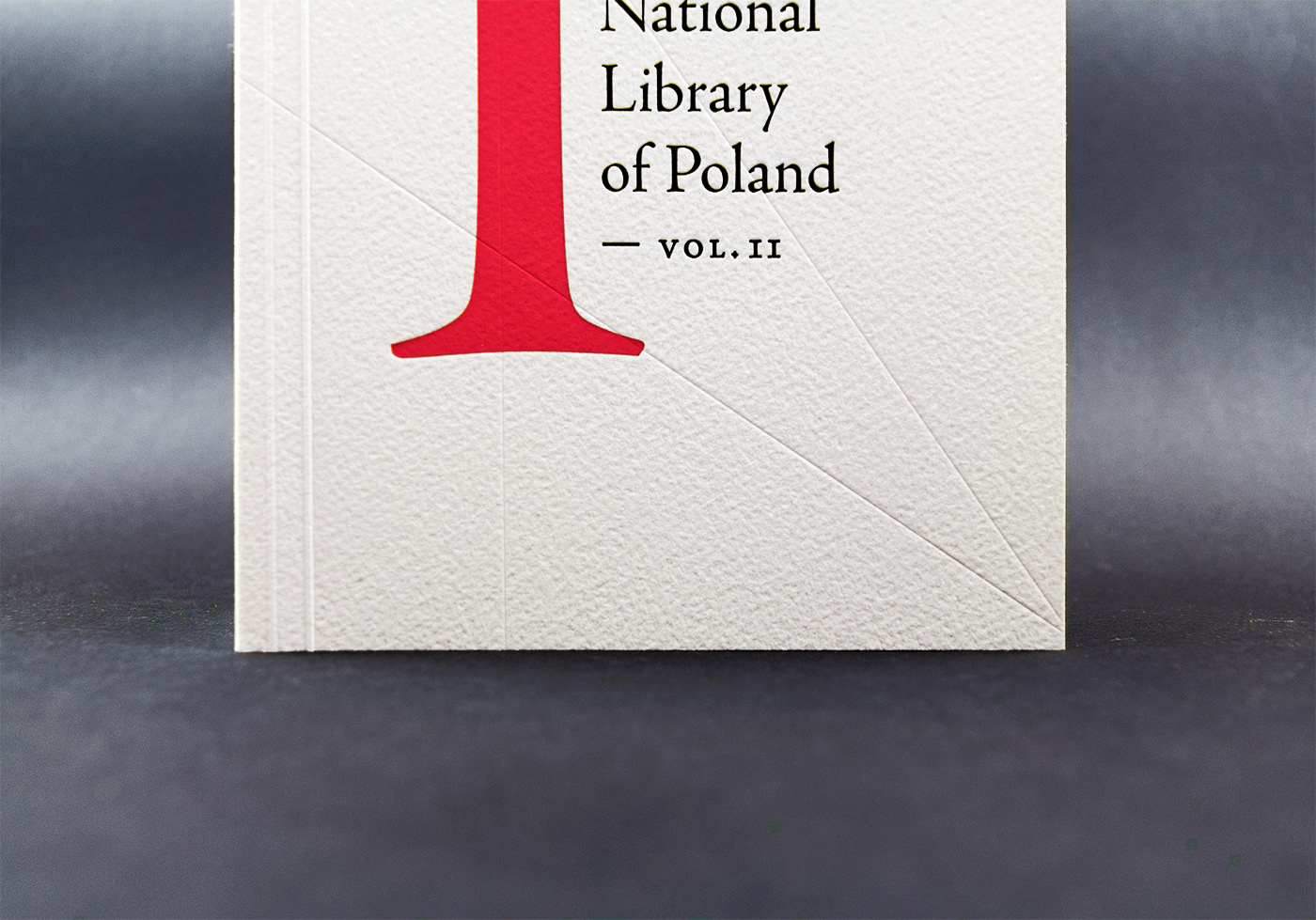


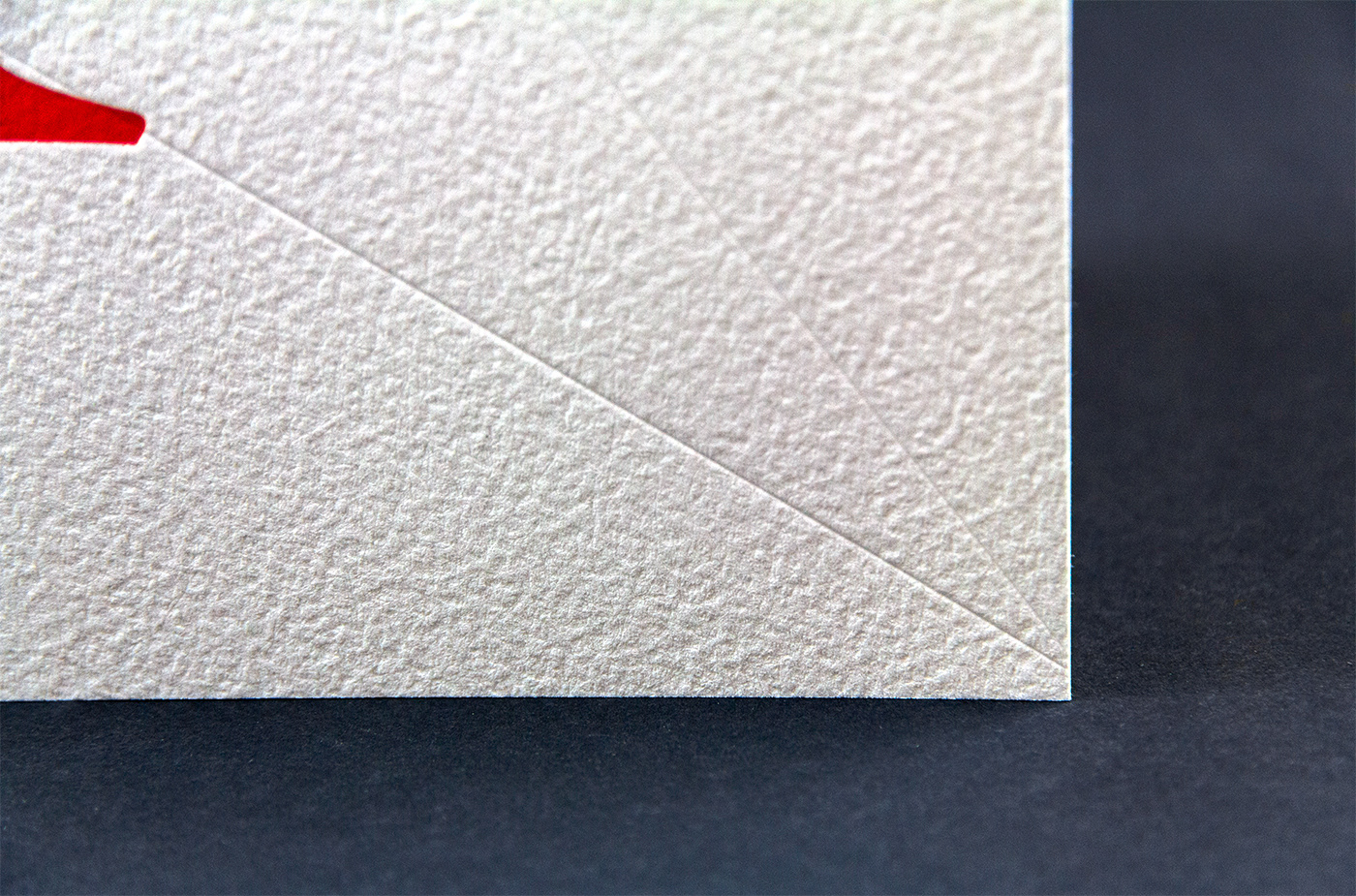

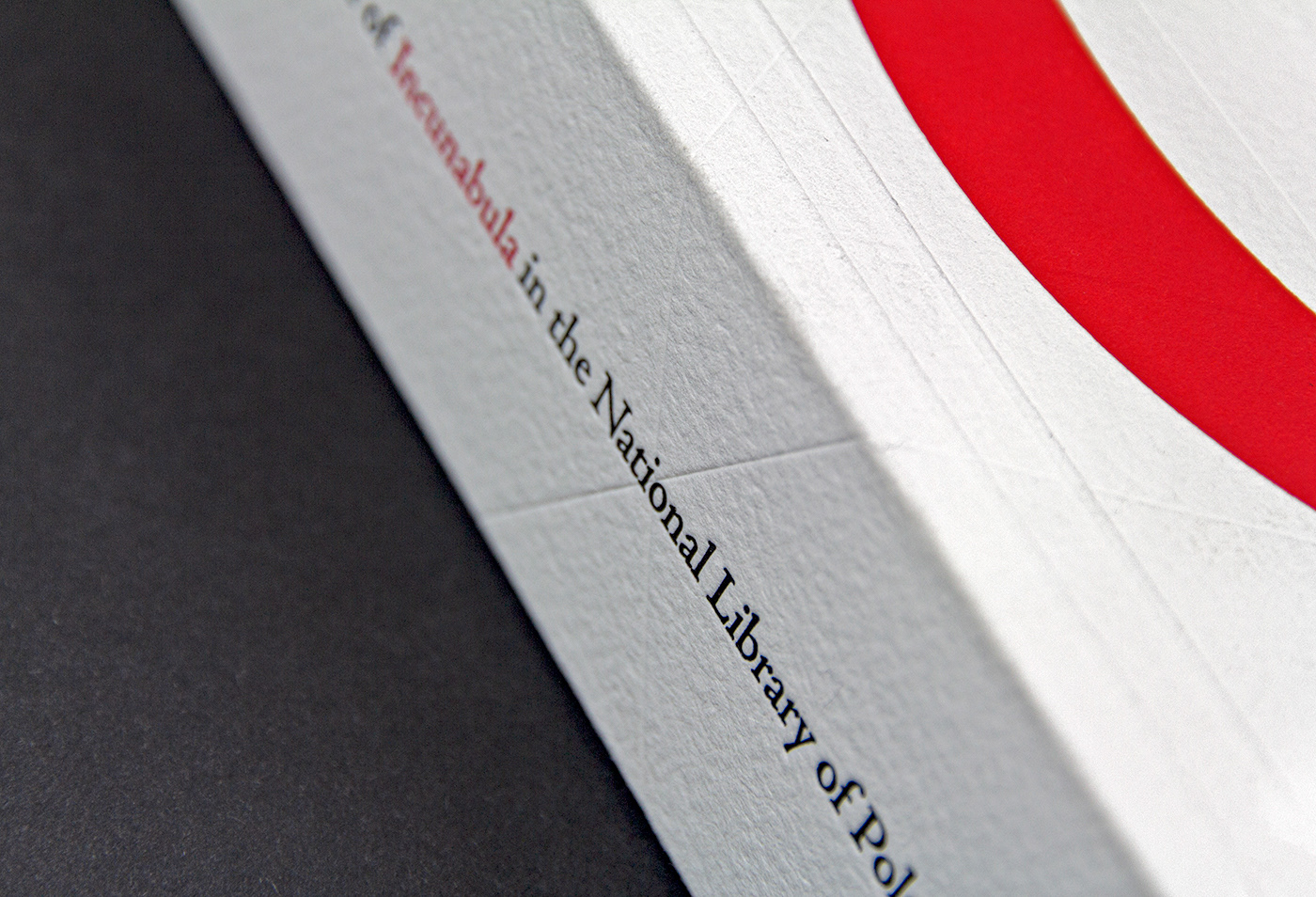



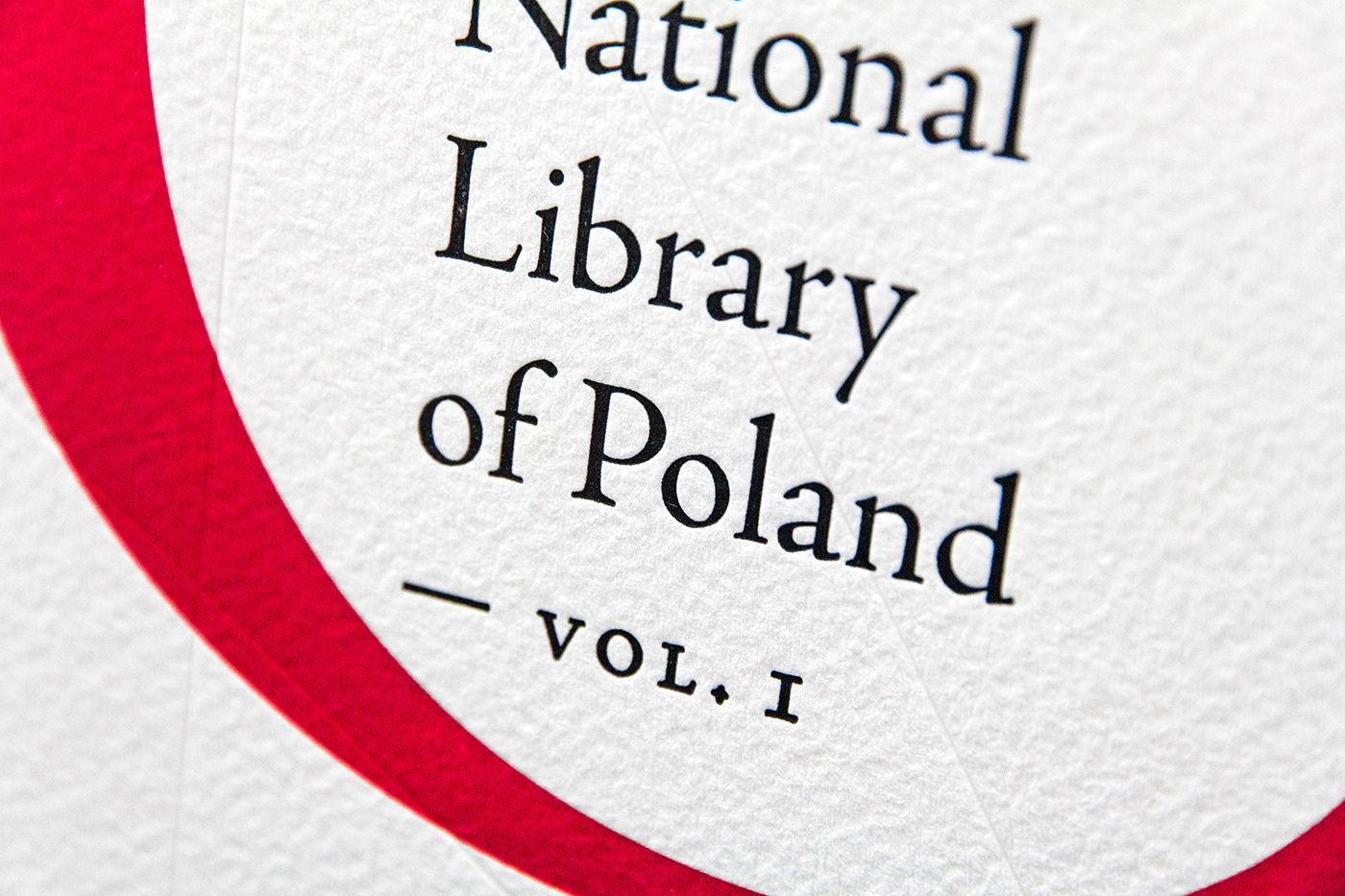


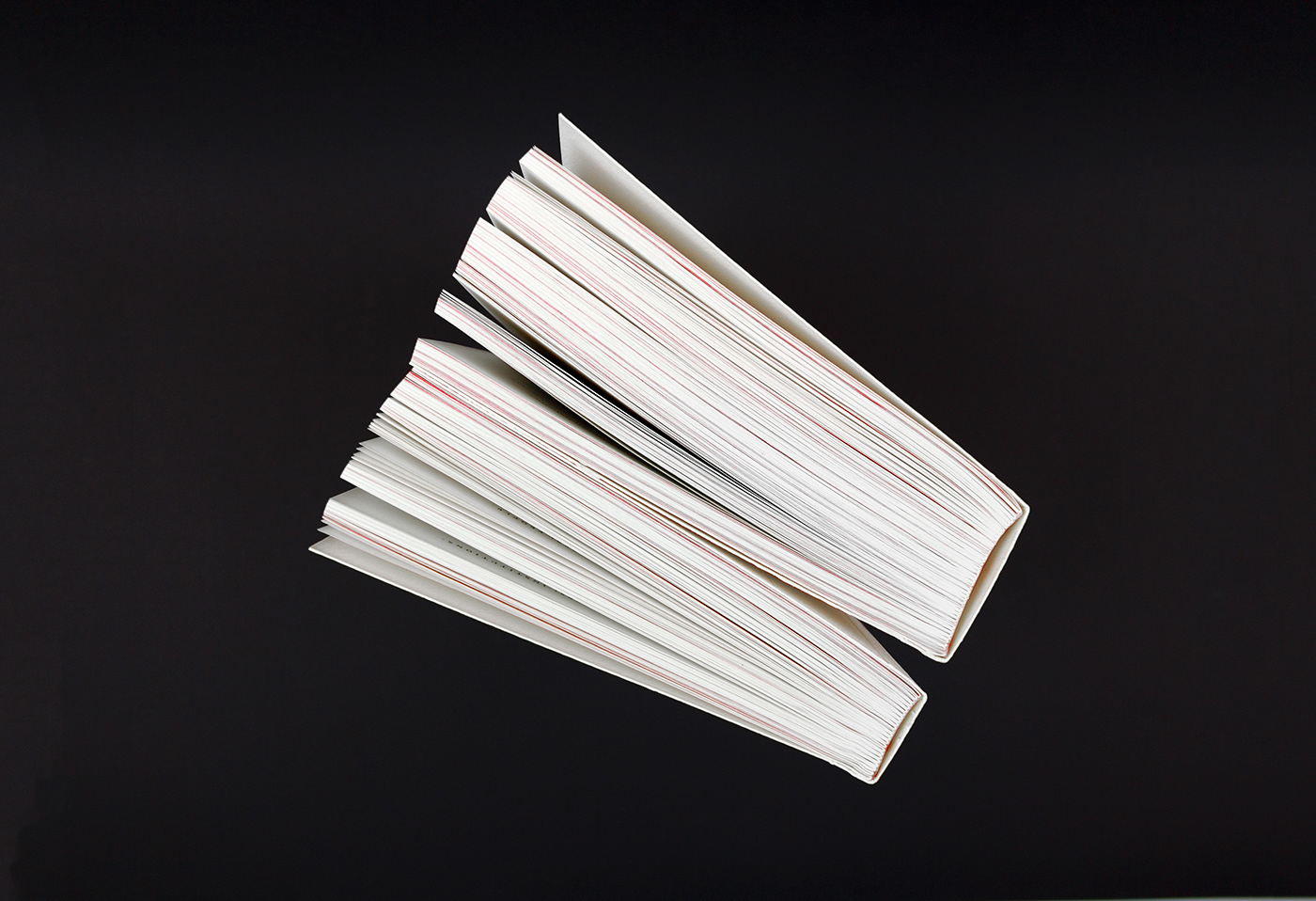
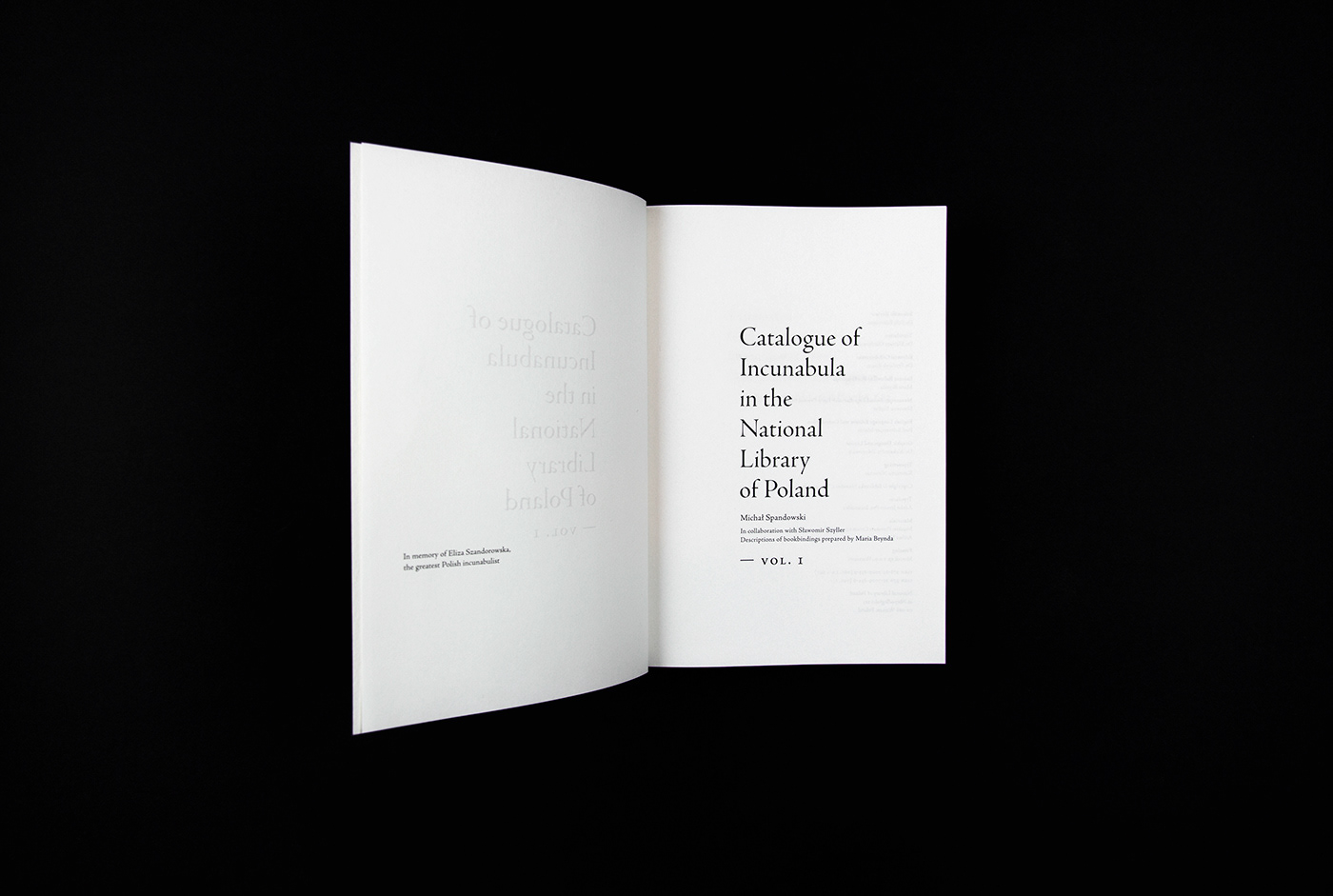
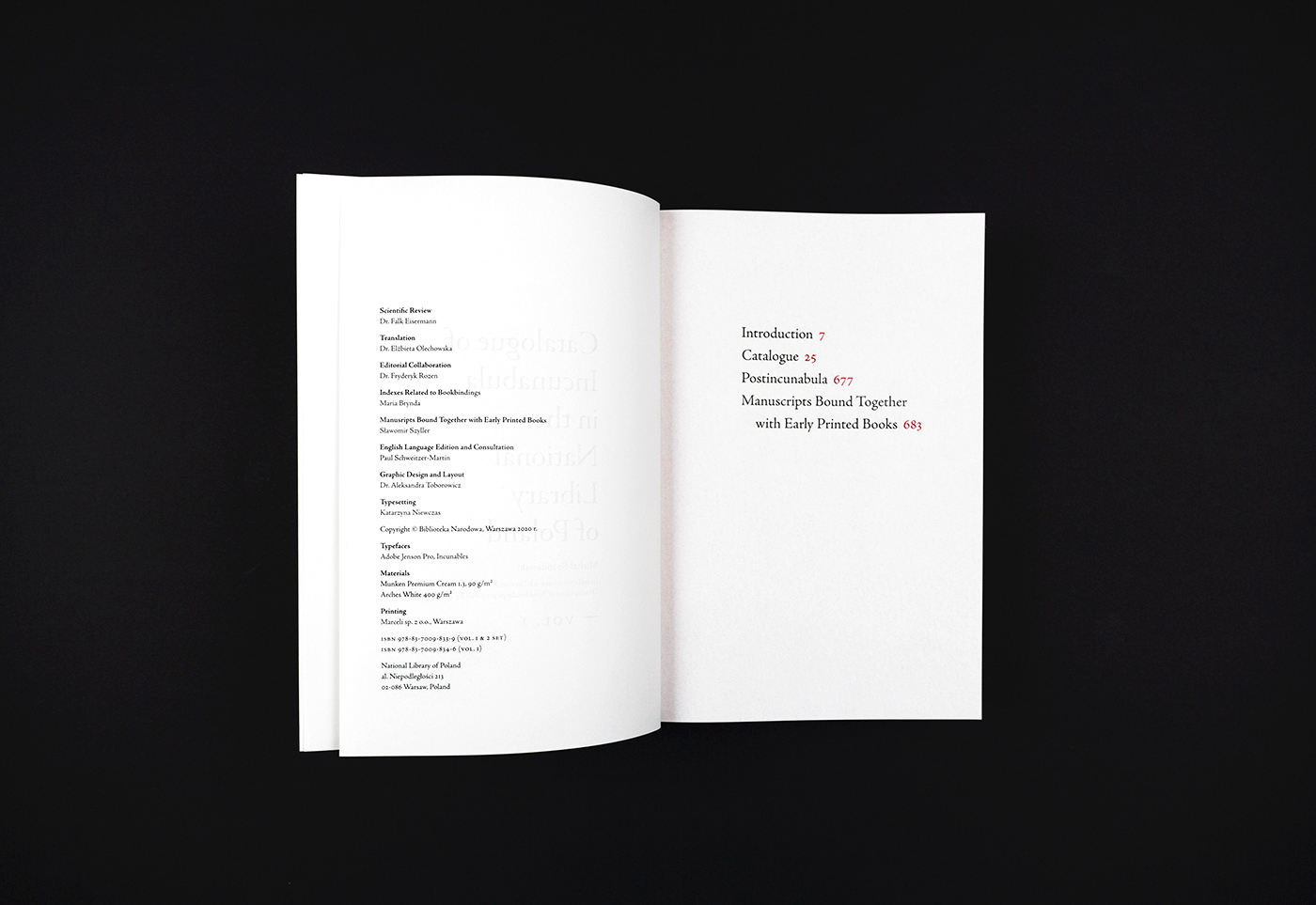


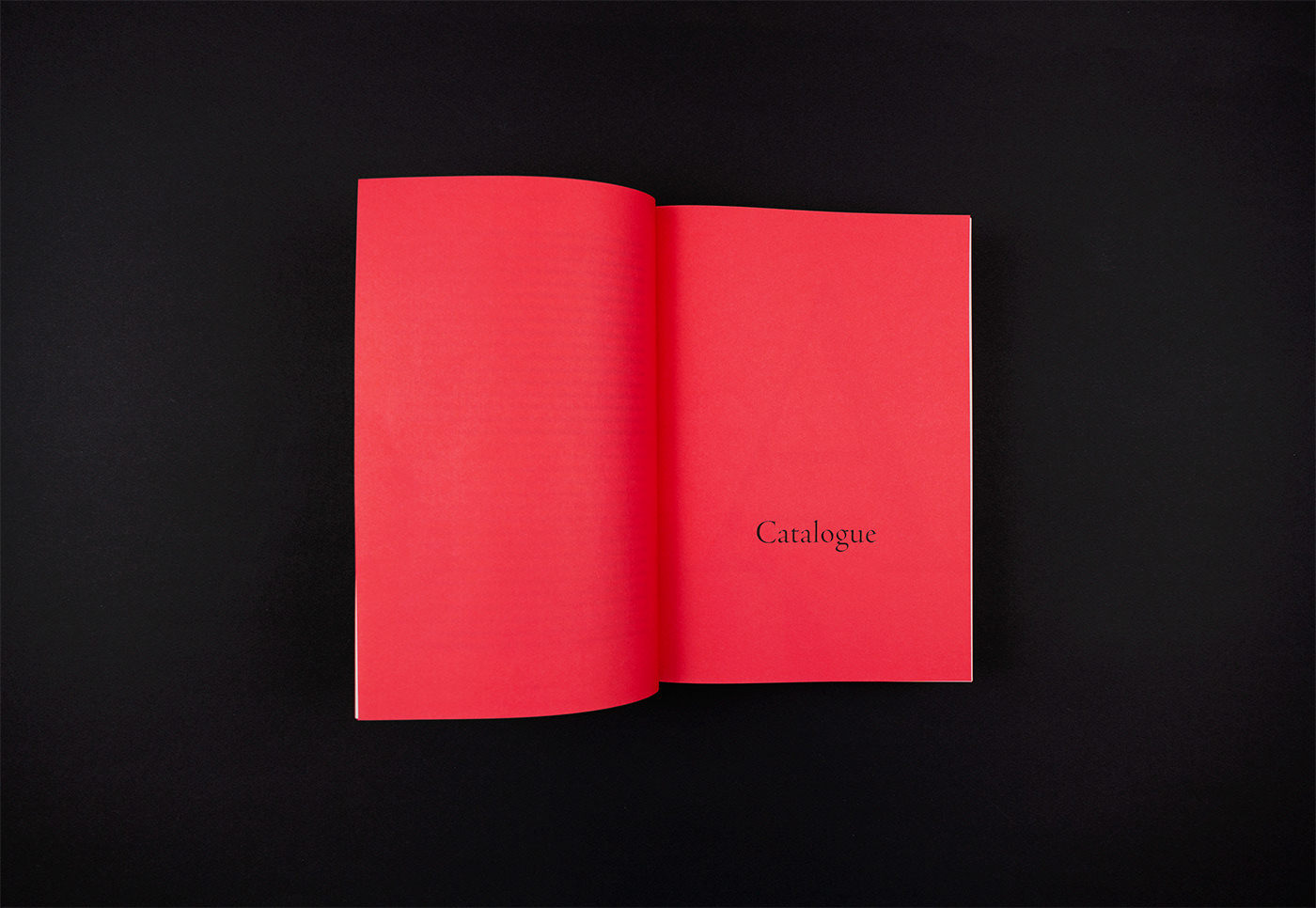

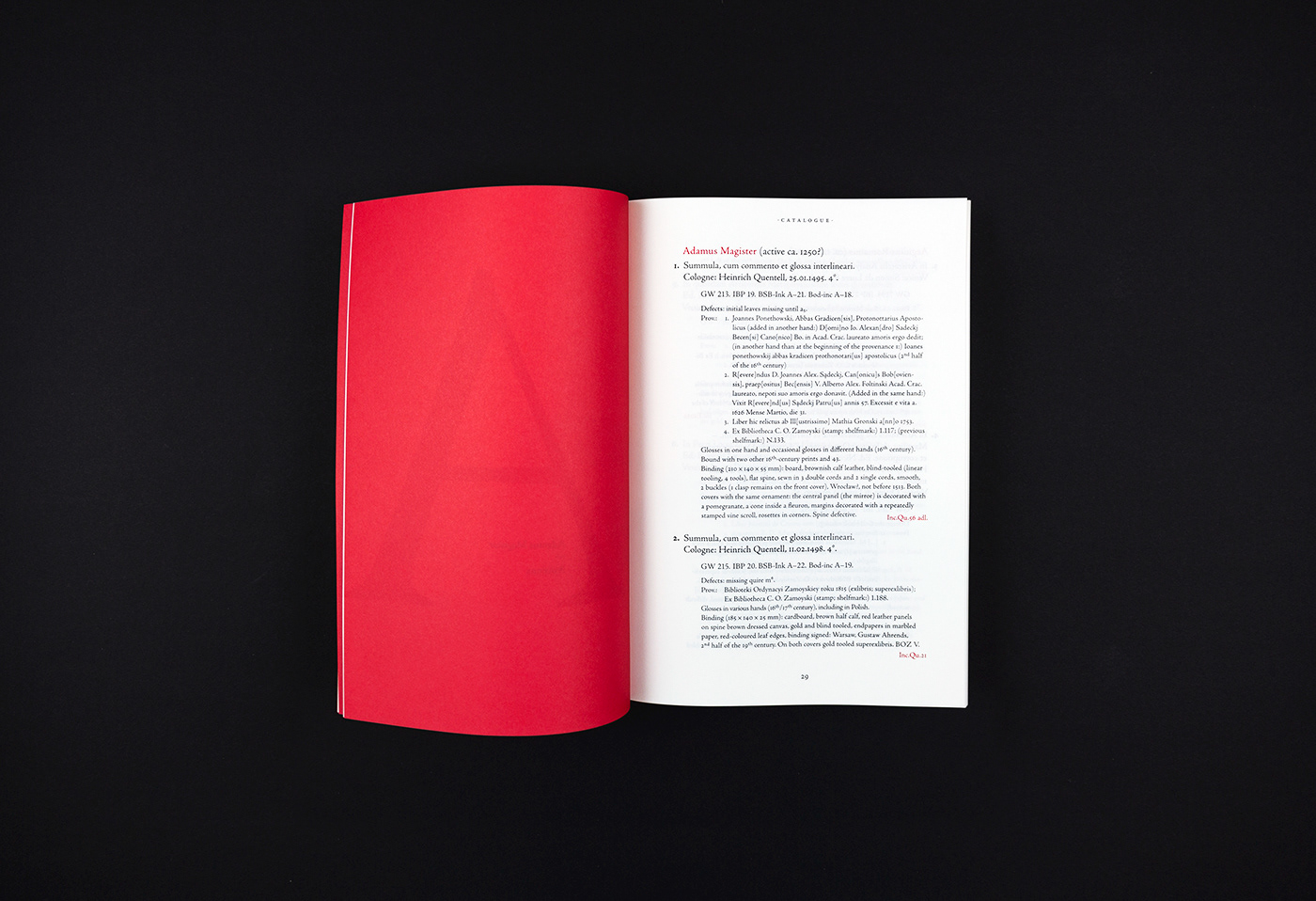

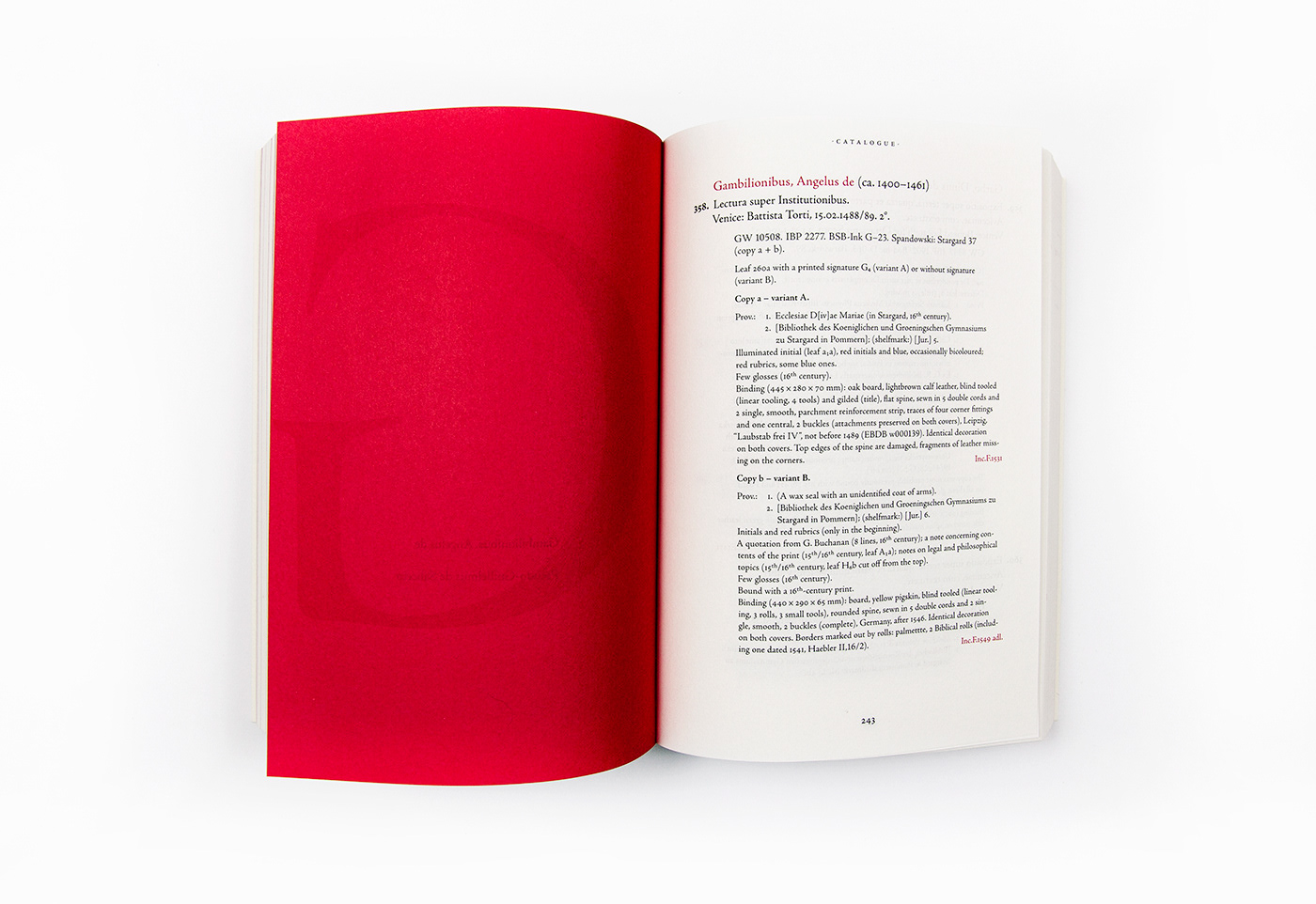

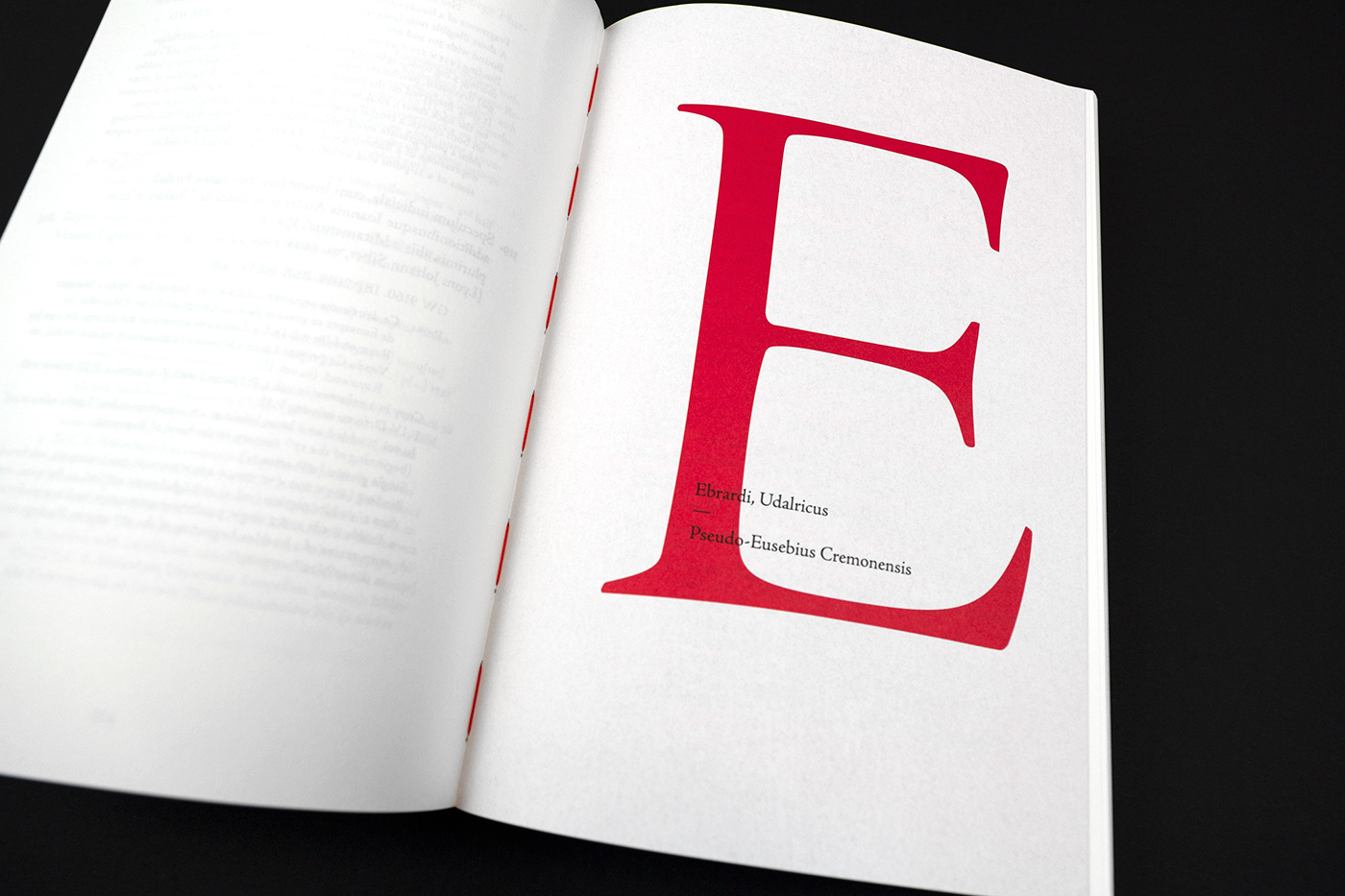
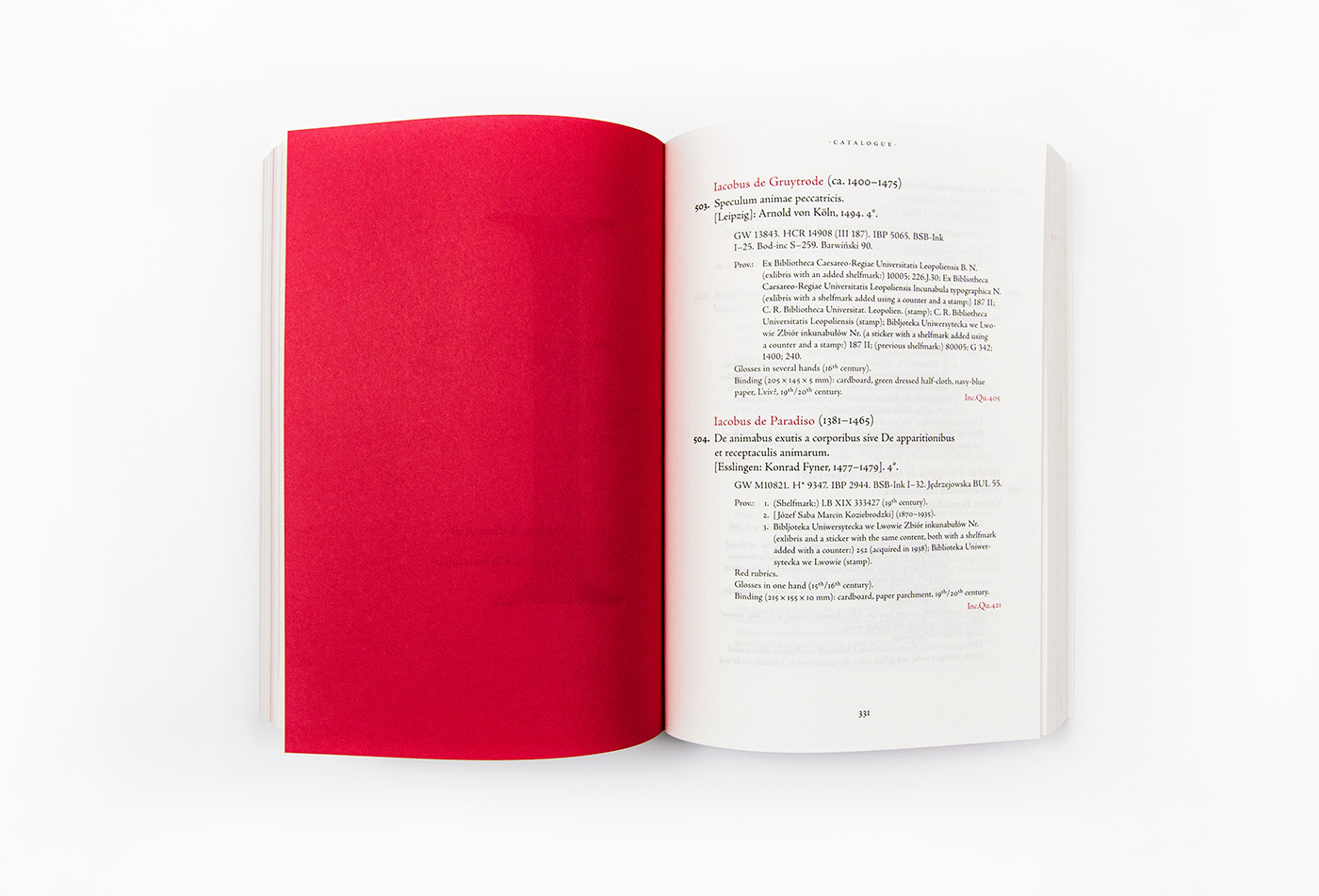



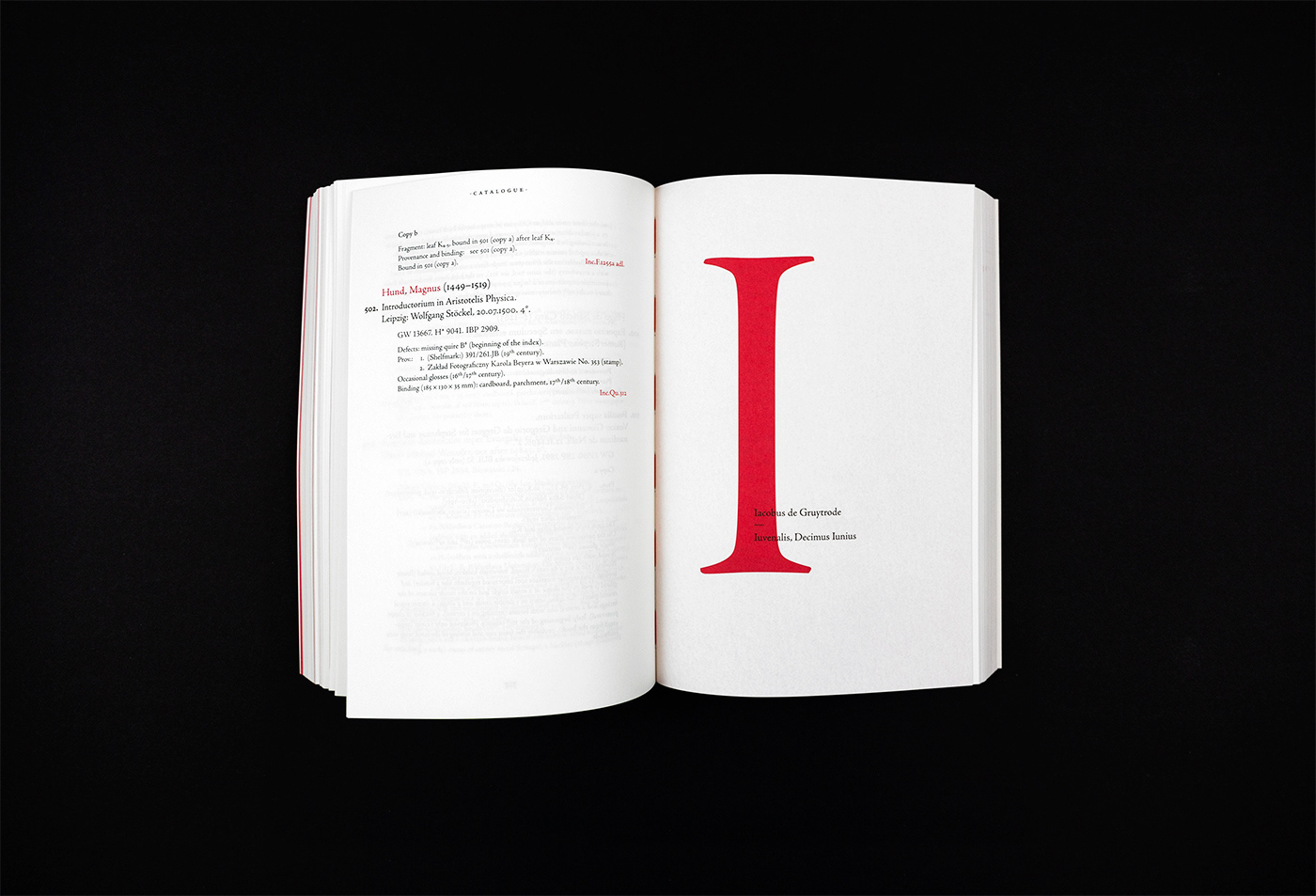


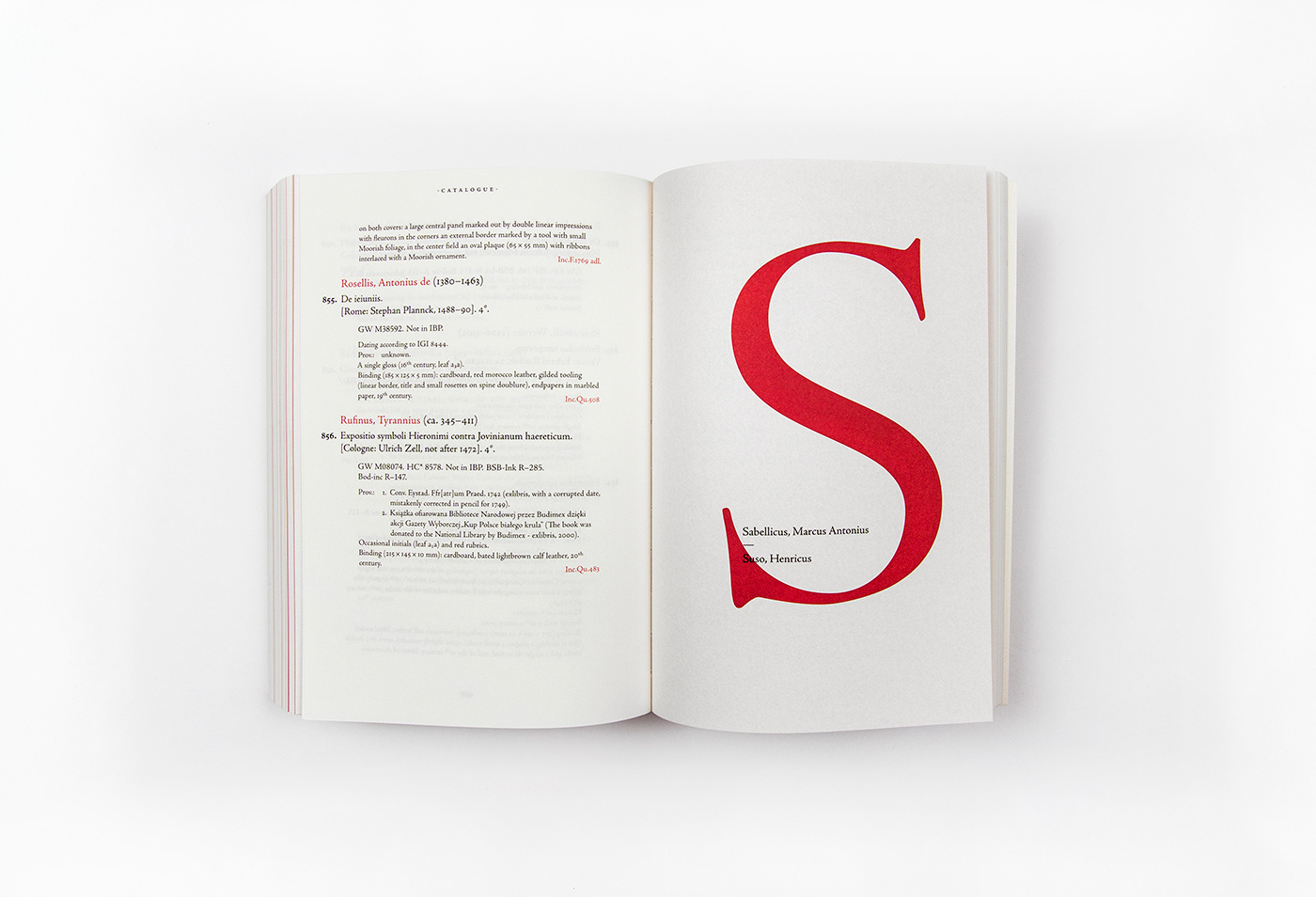



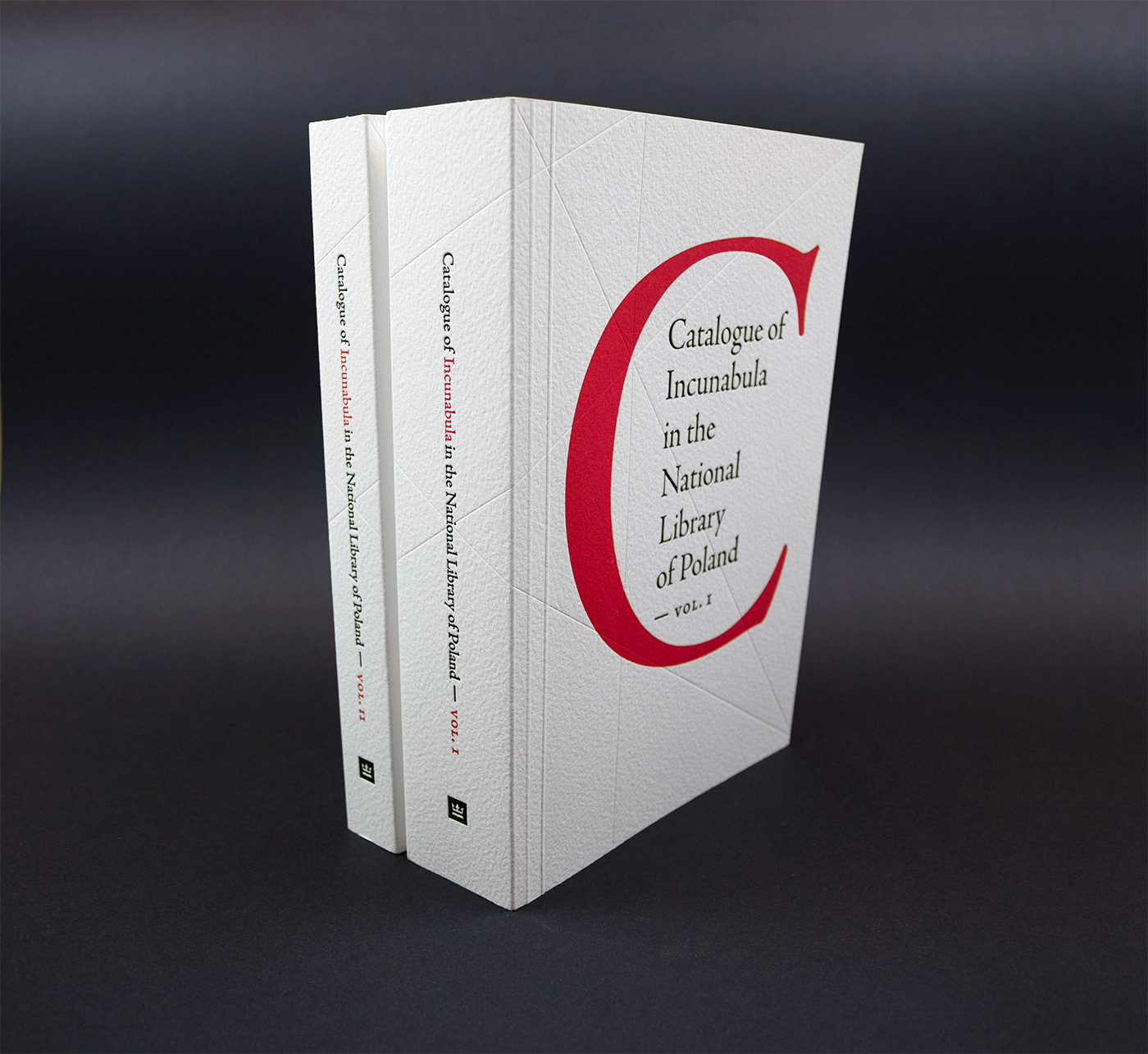

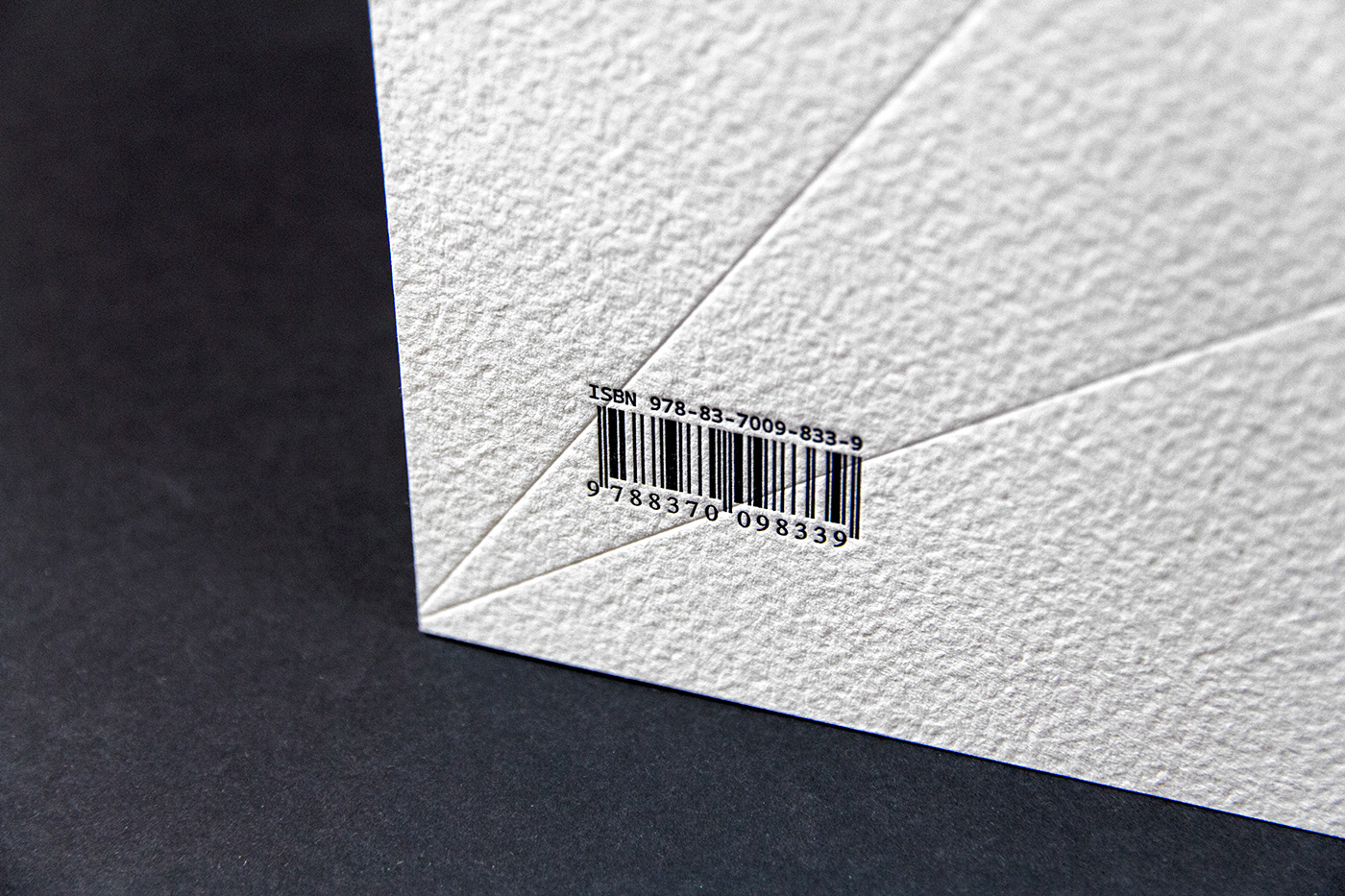
“The two-volume English-language Catalogue of Incunabula in the National Library of Poland details the collection of fifteenth-century prints held by the BNP, the sixth-largest such collection in Poland (1,131 copies of 1,034 printed editions). This new publication continues the tradition of research into the oldest surviving examples of printing, begun by Kazimierz Piekarski before the Second World War. Perhaps the greatest achievement of this tradition so far was the publication of the central catalogue of all incunabula in Poland; now it is the turn of the collection of the National Library, presented here in great detail.
The Catalogue of Incunabula in the National Library of Poland was compiled by Michał Spandowski in collaboration with Sławomir Szyller. Descriptions of the bindings are by Maria Brynda. The National Library of Poland has a cooperation agreement with the Berlin State Library dating from 2011, thanks to which the Catalogue has been reviewed by Dr Falk Eisermann, head of the Gesamtkatalog der Wiegendrucke (Union Catalogue of Incunabula) in Berlin, whose division is the leading body dealing with the global bibliography of fifteenth-century prints. Paul Schweitzer-Martin, expert in incunabula at the University of Heidelberg, helped produce the English version. It was decided to publish in English due to the international nature of research in this field and so that the Catalogue would reach a wider audience.
The Catalogue describes incunabula from a number of important historical collections, including the famous Biblioteka Ordynacji Zamojskiej (Count Zamoyski Family Library) and the Count Tarnowski Family Library in Dzików. It includes descriptions of objects saved from the pre-War collection of the National Library, almost completely destroyed following the Warsaw Uprising. The Catalogue further adds to our bibliographic knowledge of fifteenth-century printing by presenting a number of unique items not covered in the existing literature. It also contains specialised descriptions of the medieval manuscripts that are bound together with the incunabula, and selected post-incunabula.
The second volume of the Catalogue contains a number of research tools making it easier to use the over 1,000 individual descriptions in the first volume. In addition, two provenance indexes provide extensive information on the former owners of the incunabula, with individual owners listed separately from institutions such as libraries, monasteries and churches.
The Catalogue of Incunabula in the National Library of Poland is available from the online bookshop of the National Library of Poland.” – BN




